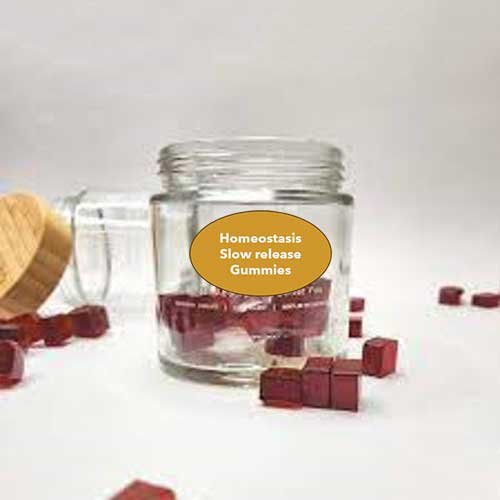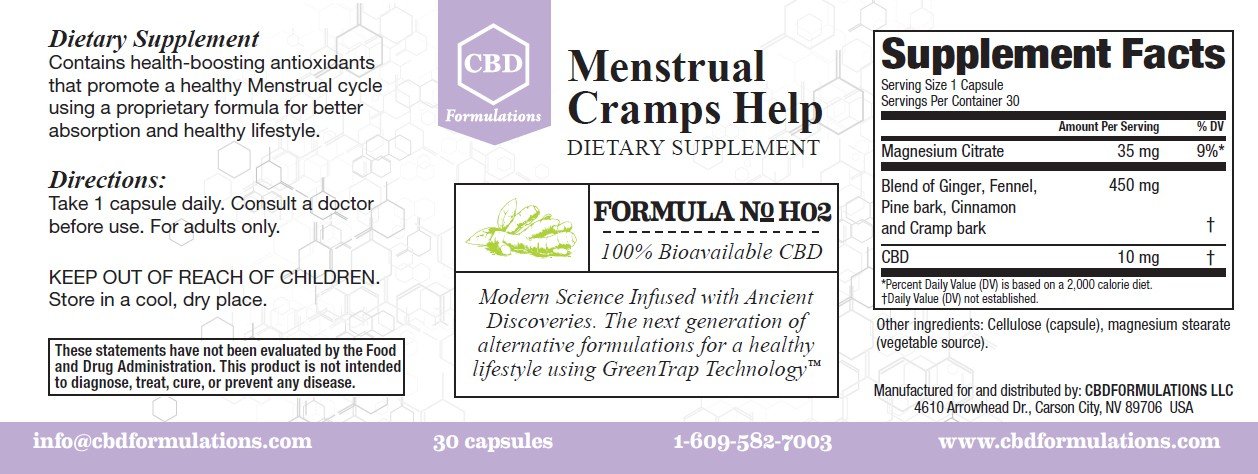Menstrual Cramp Help
$89.00
Symptoms of menstrual cramps include:
- Throbbing or cramping pain in your lower abdomen that can be intense
- Pain that starts 1 to 3 days before your period, peaks 24 hours after the onset of your period and subsides in 2 to 3 days
- Dull, continuous ache
- Pain that radiates to your lower back and thighs
Description
Menstrual cramps (dysmenorrhea) are throbbing or cramping pains in the lower abdomen. Many women have menstrual cramps just before and during their menstrual periods.
For some women, the discomfort is merely annoying. For others, menstrual cramps can be severe enough to interfere with everyday activities for a few days every month.
Conditions such as endometriosis or uterine fibroids can cause menstrual cramps. Treating the cause is key to reducing the pain. Menstrual cramps that aren’t caused by another condition tend to lessen with age and often improve after giving birth.
Symptoms of menstrual cramps include:
- Throbbing or cramping pain in your lower abdomen that can be intense
- Pain that starts 1 to 3 days before your period, peaks 24 hours after the onset of your period and subsides in 2 to 3 days
- Dull, continuous ache
- Pain that radiates to your lower back and thighs
Some women also have:
- Nausea
- Loose stools
- Headache
- Dizziness
WHEN TO SEE A DOCTOR
If menstrual cramps disrupt your life every month, if your symptoms progressively worsen or if you just started having severe menstrual cramps after age 25, see your doctor.
Causes
During your menstrual period, your uterus contracts to help expel its lining. Hormonelike substances (prostaglandins) involved in pain and inflammation trigger the uterine muscle contractions. Higher levels of prostaglandins are associated with more-severe menstrual cramps.
Menstrual cramps can be caused by:
- Endometriosis. The tissue that lines your uterus becomes implanted outside your uterus, most commonly on your fallopian tubes, ovaries or the tissue lining your pelvis.
- Uterine fibroids. These noncancerous growths in the wall of the uterus can cause pain.
- Adenomyosis. The tissue that lines your uterus begins to grow into the muscular walls of the uterus.
- Pelvic inflammatory disease. This infection of the female reproductive organs is usually caused by sexually transmitted bacteria.
- Cervical stenosis. In some women, the opening of the cervix is small enough to impede menstrual flow, causing a painful increase of pressure within the uterus.
Menstrual cramps don’t cause other medical complications, but they can interfere with school, work and social activities.
Certain conditions associated with menstrual cramps can have complications, though. For example, endometriosis can cause fertility problems. Pelvic inflammatory disease can scar your fallopian tubes, increasing the risk of a fertilized egg implanting outside of your uterus (ectopic pregnancy).
Herbs to ease out symptoms
#1 Chamomile
Chamomile is one of my favourite medicinal herbs because it’s quite safe to use (even in infants) and has a wide variety of uses. Chamomile flowers can even be grown in your home garden and make a beautiful and functional addition.
Chamomile has many actions, including being anti-inflammatory, spasmolytic, mildly sedative, and carminative. What you need to know from this list is that it’s anti-inflammatory and spasmolytic actions will help to calm uterine contractions.
The mild sedative action is helpful for calming us down and allowing our nervous systems to relax as our uterus does during that time of the month.
#2 Red Raspberry Leaf
A classic female herb, this nutrient-dense leaf from the plant we get our raspberries from provides both support for our reproductive system and loads of essential vitamins and minerals that are supportive to health.
Raspberry lead is a spasmolytic herb that also helps to reduce prostaglandins, a big contributor to menstrual cramps (and menstrual diarrhea).
The antioxidants and vitamins and minerals like vitamin C and iron help support normal menstrual cycles. This is partly why raspberry leaf is known as a uterine tonic, being able to generally strengthen and tone the uterus and entire reproductive system for healthier cycles and flow.
#3 Vitex
Also known as Chaste Berry and Chastetree Berry, this is one of the most popular herbs for women’s health, and it’s one I get asked about a lot. It is mainly found in the mediterranean. It is the berries of the vitex plant that are used as medicine, and this plant is mostly used for female health issues. Vitex can be purchased as capsules, tincture and the dried herb to be used as tea.
Vitex is used for the treatment of female hormonal and fertility issues. The main way that Vitex works is by stimulating the pituitary gland in your brain to produce hormones. Specifically, it stimulates the production of more luteinizing hormone (LH) and progesterone. Both of these hormones spike at or around ovulation.
The way that Vitex is able to get your body to do this is by suppressing prolactin production. Prolactin is a hormone that when high enough will prevent ovulation from occurring, so reducing levels of this hormone is key to increasing LH and progesterone for successful ovulation and a strong luteal phase.
In this way, Vitex indirectly helps with menstrual cramping because it will move to balance progesterone levels, and low levels of progesterone contribute to PMS and resulting menstrual cramping, as well as breast tenderness and irregularities.
If you want to know more about Vitex and whether it’s right for you, check this out.
#4 Cramp Bark
Native to Eastern North America, Cramp Bark (aka Viburnum opulus) is a classically used medicinal for dysmenorrhea or menstrual cramping. Cramp Bark is a uterine tonic, uterine anti-spasmodic and musculoskeletal anti-spasmodic, making it perfect for cramps.
Because of it’s affinity for reducing spasm in the uterus, it’s also been used for threatened miscarriage, UTI spams, irritable bladder, and chronic pelvic pain.
This herb can be used dried in a tea (as in Cramp Tea) or as a tincture. Typically it is recommended that this herb (along with the others on this list) be used a few days prior to the period and during the whole bleed for best results.
Do not use this herb if you have kidney problems and shouldn’t been used during pregnancy or lactation without supervision from a qualified herbal practitioner.
#5 Ginger
Ginger is widely used in cooking and is seriously delicious. It’s so versatile, and can be used in both sweet and savoury dishes. It can also be used medicinally, as a tea, tincture or capsules. I use ginger quite a bit in the Tea Shop, and it plays a big role in my Cramp Tea.
Some of the many actions of ginger or Zingiber officinale include being a carminative (anti-gas), anti-nauseant, spasmolytic, anti-inflammatory, and a digestive stimulant. In fact- it has many of the same properties as chamomile, as these herbs are often combine together.
Many women experience digestive upset alongside their menstrual flow and cramps, making ginger an ideal choice. In studies for it’s anti-inflammatory benefits, it has been shown just as or more effective than over-the-counter NSAIDs.
In an Iranian study on women with dysmenorrhea, after using ginger for just one menstrual cycle, the severity of their cramps went from 28% to 8% and 36% of these women were “considerably relieved” from their cramps using ginger.
#6 Parsley
An unusual choice, and most often thought of as a culinary herb, parsley has many medicinal benefits as well.
One special property of parsley is it being an emmenagogue meaning that it stimulates menstrual flow. This is perfect for women who notice brown/pinkish spotting before their red flow arrives or experience menstrual cycle irregularities.
Like raspberry leaf, parsley contains many menstrual-supportive nutrients such as calcium, magnesium (a natural muscle relaxant), B vitamins and iron.
Because it helps to cleanse the kidneys, it may help to reduce bloating and water retention contributing to menstrual symptoms like breast tenderness, bloating and that ‘full’ feeling in the uterus that often comes along with cramps.










Reviews
There are no reviews yet.